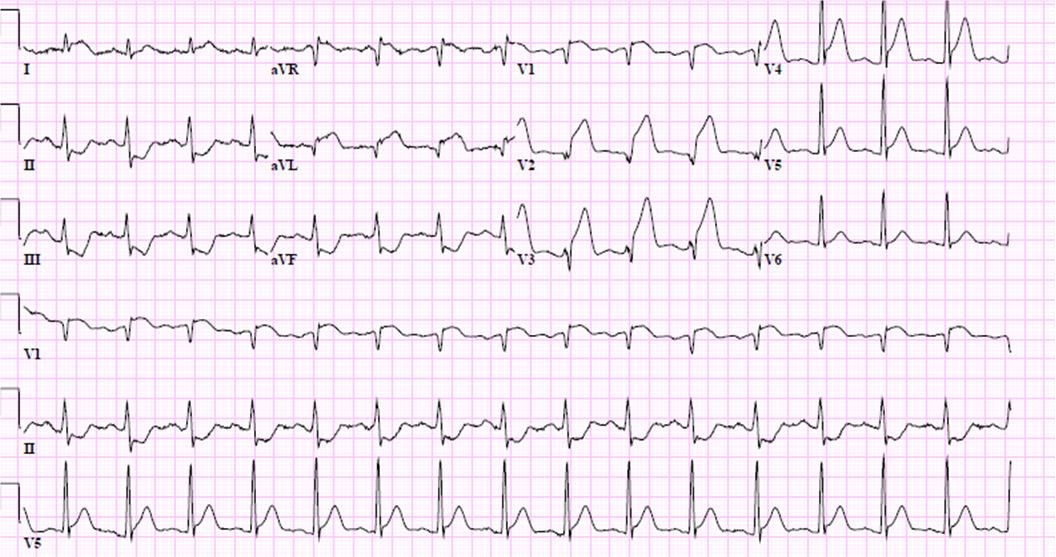A 62-year-old man comes to the emergency department because of nausea and abdominal pain. He describes the pain as a pressure located in the epigastric area which feels like it is "pushing up" into his chest. It began approximately 30 minutes before his arrival and he thinks it is related to having eaten some spicy food the night before. The pain initially improved while leaning forward, but it is now present in any position. The patient has no shortness of breath or palpitations. He has a history of benign prostatic hyperplasia that is well-controlled with tamsulosin. He does not smoke or use illicit drugs but drinks 4-5 alcoholic beverages daily, and occasionally consumes more.
His blood pressure is 135/75 mm Hg in the right arm and 130/75 mm Hg in left arm, pulse is 70/min, and respirations are 14/min. Pulse oximetry shows 98% oxygen saturation on room air. The patient is in moderate pain and is diaphoretic. There is a 2/6 systolic murmur at the apex which radiates to the axillae. The lungs are clear to auscultation. The remainder of the physical examination is within normal limits.
Laboratory results are as follows:
A 12-lead electrocardiogram is shown in this exhibit.
Which of the following is the most appropriate next step in the management of this patient?
Definitions:
Legal Aid
Assistance provided to individuals, usually free of charge or at a reduced rate, to help them pursue legal matters.
Free Legal Services
Legal advice, representation, or other legal work provided without charge to individuals who cannot afford to pay for such services.
Power
The capability to shape or control the actions of others or the direction of occurrences.
President
The elected head of a republican state or organization, often the highest executive officer with significant leadership responsibilities.
Q4: When a wholesaler sells <img src="https://d2lvgg3v3hfg70.cloudfront.net/TBX8672/.jpg" alt="When
Q15: The initials of the typist are usually
Q28: Use the quadratic formula to find all
Q52: A 27-year-old woman, gravida 1 para 0,
Q63: A 72-year-old man is brought to the
Q73: A 76-year-old man is brought to the
Q78: A 64-year-old man with a history of
Q81: A 61-year-old man with a history of
Q117: A 46-year-old man comes to the emergency
Q121: A 56-year-old man with a past medical